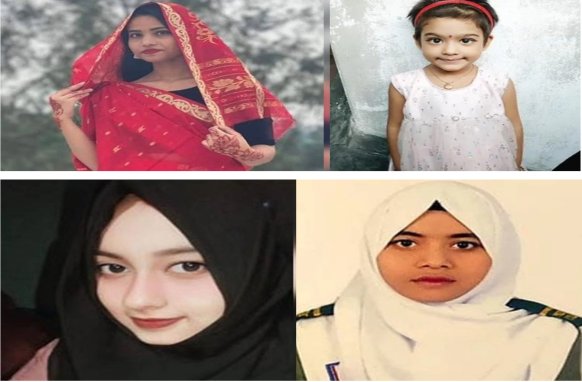Naima Sultana took part in the July Movement by creating instead of destroying—she created posters carrying slogans against the quota system and calling out the brutality imparted by the Chhatra League and law enforcers. Instead, on what should’ve been a regular summer evening on July 19, 2024, filled with the aroma of baking pizza for dinner, Naima was shot dead by a stray bullet as she went out into the balcony of her apartment. She died instantly. She was only 15. Her family never had that dinner.
The story of Riya would be etched in the mind of every Bangladeshi old enough to remember 2024 in Bangladesh. Riya Gope, only 6, was shot dead while in the circle of her father’s arms, in the roof of their building, a place guaranteed to offer warm comfort and security. She was the youngest to die as a direct result of the movement.
A grandmother stepped out with her young grandson to get some ice-cream—but they would never do so again. A stray bullet hit seven-year-old Musa, entering from one side of his head and exiting through the other, while his grandmother, Maya Islam, 60, was hit with the same bullet in her abdomen. Despite doctor’s assurances, she succumbed to her injuries, and little Musa was sent to Singapore for treatment. Musa’s father, Mostafizur Rahman, could not attend his mother’s funeral as he was fulfilling his paternal duties at the hospital.
Among the total death toll of 11 female—adults and minors—released by the Ministry of Women and Children Affairs, 10 were able to be verified. Alongside Naima, Riya, and Maya, Shahinur Begum, 55, Nasima Akhter, 24, Meherun Nesa, 22, Liza Akhter, 21, Sumaiya Akhter, 20, Nafisa Hossain Marwa, 17, Rita Akhter, 17, were also killed that monsoon.
Women and young girls have been at the forefront of the protests that brought down a fascist government, which had conducted great abuse of power in the 15 years they occupied the throne. However, seven of the ten mentioned above lost their lives within their homes, out of the war zone.
According to a report released by the OHCHR in February 2025, 12 percent of reported 1400 deaths related to the protests were children under the age of 18. Moreover, a LEEDO study revealed the deaths of 168 street children, with at least 62 percent losing their shelters in Dhaka. The curfews in July 2024 affected their access to food, water, and shelter. And all this does not account for the violence they have been indirectly affected by or been a witness to outside in the streets they call their home.
When the innocent is killed while living their daily lives, no number of seconds passing or assistance provided will resolve the grief, anger, and despair knotting up the heartstrings of the nation. With every recounting of a July martyr’s final moments, the one resounding cry uttered by every bereaved parent, devasted siblings, desolated children, and heartbroken companions, was, “we want justice.”
Yet, for these people, who were not even actively participating in the protests, justice remains elusive a year after their murders.


